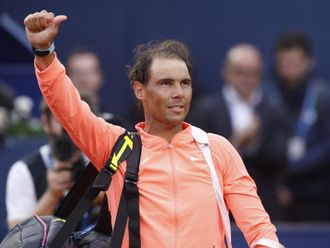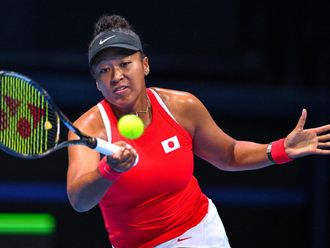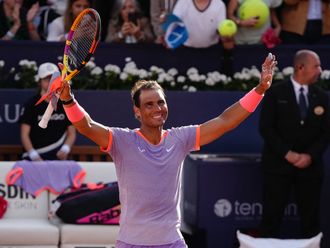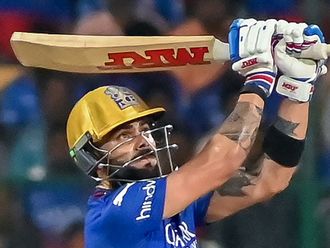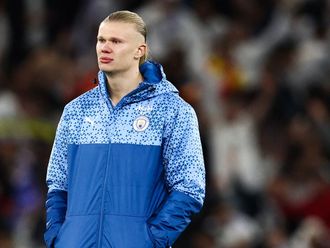One of the most memorable stories in ‘Open’, Andre Agassi’s autobiography, got stuck into Pete Sampras for guarding his wallet as tightly as his service games.
Spotting his great rival leaving an Italian restaurant, Agassi rushed out to ask the valet how much Sampras had offered as a tip. “A dollar,” came the reply, “and he said to give it to whichever kid actually brought his car around.” Busted!
Agassi’s expose can hardly have improved the already frosty relations between these two kings of the court, especially after he went on to repeat the accusation in public during a 2010 exhibition match. Yet Sampras was left with little opportunity for a comeback, because Agassi’s own social conscience is beyond doubt.
Where most tennis legends celebrate the end of their career with a long lie-down on the sofa, the 1992 Wimbledon champion has set out to reinvent the United States education system. His campaign began 14 years ago, with the establishment of the Andre Agassi Preparatory Academy in a run-down part of Las Vegas, and is still expanding.
By the end of this year, Agassi hopes to have extended his tally of charter schools to more than 100, spread from Nevada to Tennessee.
“The USA has dropped to 29th in the world when it comes to educating our children,” Agassi told The Daily Telegraph. “The demand for good schooling is huge, but the infrastructure is not there.
“Rather than wait for the government to do the job, I wanted to create a model that would be scalable and sustainable. The idea is to find partners on each job, investors who aren’t looking to give their money away, but neither do they insist on having an annual return of 20 per cent.
“I’m in an exciting place where I can raise $175 million of funding in 15 minutes of phone calls, and the total we have gathered so far is well north of $1 billion.”
He might be discussing sums that would impress Gordon Gekko, but Agassi hardly comes across as a sharp-suited entrepreneur. Making a rare public appearance last week at a David Lloyd Leisure club in Essex, he matched low-slung jeans with a knitted hoodie and answered questions in his distinctive, drowsy drawl.
Ironically, the new saviour of American schooling barely received an education himself. Sent away to the Nick Bollettieri Academy at the age of 13 — a place he famously described as “Lord of the Flies with forehands” — Agassi soon dropped out of classes in order to spend more time with his racket. Keeping up with young rivals such as Jim Courier and David Wheaton left him too drained to concentrate.
Can we see a connection, then, between Agassi’s own frustrations as a teenager (he remembers his English teacher telling him he had a talent for poetry, a compliment he relished as much as any junior title) and his new-found quest? He pauses, as if finding the suggestion a little glib.
“If I’m going to play psychologist on myself, it might have played a role in the gravitational pull towards this space,” he finally replies, lapsing into therapy-speak for a moment. “If I’ve been very lucky and successful, it’s because I was good at tennis.
“Otherwise I would have had very few options. When I think of those who don’t have that advantage, it’s daunting to just sit back and watch that.”
By concentrating on philanthropy instead of the well-worn paths of coaching and punditry, Agassi has at least lived up to the claim made on the opening page of his autobiography: “I hate tennis, hate it with a dark and secret passion, and always have.”
Even though he is married to Steffi Graf, whose record total of 22 Grand Slam singles titles dwarfs his own eight, the couple do not own a tennis court and are rarely sighted hitting balls together.
“I never thought it was a good idea to bring work home,” he quips. “Tennis is not part of our children’s lives either — we settled for the swing set in the back yard.”
In fact, Jaden Agassi, who is 13, prefers baseball, while Jaz (11) was a keen equestrian before giving up after she was nearly trampled by her horse.
Agassi admits that his fund-raising leaves little time for exercise, but he did break his own habit by accepting an invitation to play in the legend’s slot at last winter’s International Premier Tennis League exhibition series.
Not that the trip was an unalloyed triumph. Surprised by the level of intensity on show, Agassi was trounced 6-3 by Mark Philippoussis, then pummelled 6-2 by Fabrice Santoro, and finally found himself relegated to the bench in favour of Pat Rafter.
Even if the results went against him, though, Agassi certainly found plenty to do during his week in Asia. One moment, he was advising his Singapore Slammers teammate Tomas Berdych to introduce more variety to his second serve, the next he was catching up with Rafter, a much-respected rival from the late 1990s.
“One upside was reconnecting with some people I’ve thought highly of over the years — and ignoring a few I haven’t thought so highly of over the years,” he said with a wry smile.
“It was great to spend some time with some of those guys, without the pink elephant of trying to succeed in their demise.
“As for the tennis, it was a different experience. At most exhibition events both players have a shared arrangement to make each other feel good and look good. This was the antithesis of that. I had to put any ego off to the side and take a couple of necessary beatdowns.
“There was a particular difficulty in being thrown in with no warm-up. With the shot-clock ticking away, a set can go by in a hurry. I was a bit disappointed and frustrated afterwards. If I go back, I will take the necessary steps and put in some focused work to return the favour to the unfortunate soul on the other side of the net.”
Even if Agassi has stepped outside the narrow bounds of the tennis world, he has clearly logged the winter’s defeats in his list of slights to be avenged. It is a reminder that nobody wins the career grand slam without possessing a ferocious competitive streak.
“Playing in the IPTL, I reminded myself how easy it is to become a moody person,” he said with a smile. “Whereas I’ve discovered since retiring that I’m relatively stable — it’s tennis that’s moody.”
— The Daily Telegraph


